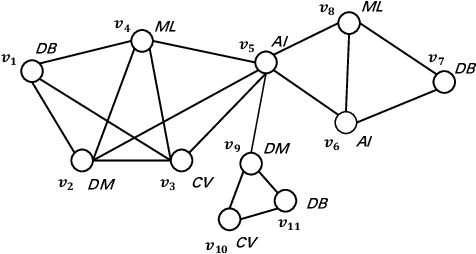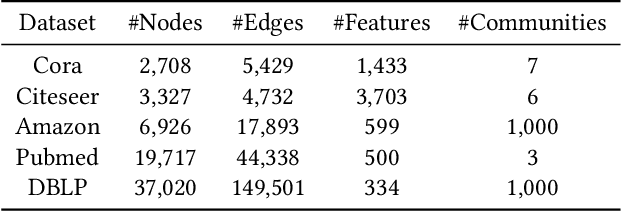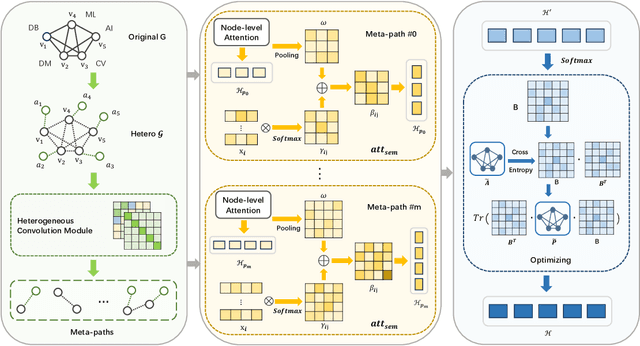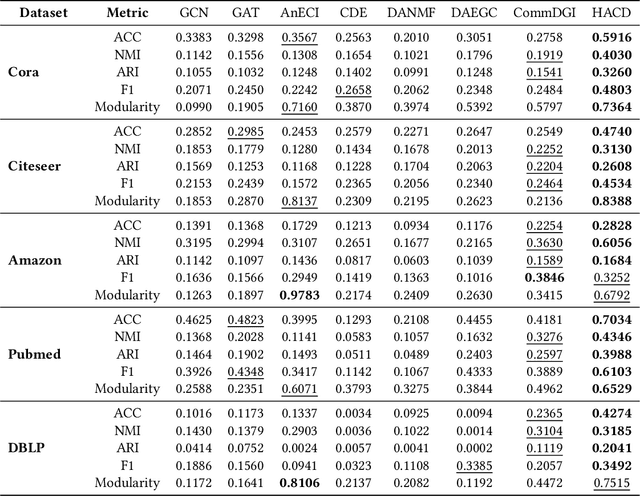Yuhan Zhao
Leave No One Behind: Fairness-Aware Cross-Domain Recommender Systems for Non-Overlapping Users
Jul 23, 2025Abstract:Cross-domain recommendation (CDR) methods predominantly leverage overlapping users to transfer knowledge from a source domain to a target domain. However, through empirical studies, we uncover a critical bias inherent in these approaches: while overlapping users experience significant enhancements in recommendation quality, non-overlapping users benefit minimally and even face performance degradation. This unfairness may erode user trust, and, consequently, negatively impact business engagement and revenue. To address this issue, we propose a novel solution that generates virtual source-domain users for non-overlapping target-domain users. Our method utilizes a dual attention mechanism to discern similarities between overlapping and non-overlapping users, thereby synthesizing realistic virtual user embeddings. We further introduce a limiter component that ensures the generated virtual users align with real-data distributions while preserving each user's unique characteristics. Notably, our method is model-agnostic and can be seamlessly integrated into any CDR model. Comprehensive experiments conducted on three public datasets with five CDR baselines demonstrate that our method effectively mitigates the CDR non-overlapping user bias, without loss of overall accuracy. Our code is publicly available at https://github.com/WeixinChen98/VUG.
Exploring the Potential of LLMs for Serendipity Evaluation in Recommender Systems
Jul 23, 2025Abstract:Serendipity plays a pivotal role in enhancing user satisfaction within recommender systems, yet its evaluation poses significant challenges due to its inherently subjective nature and conceptual ambiguity. Current algorithmic approaches predominantly rely on proxy metrics for indirect assessment, often failing to align with real user perceptions, thus creating a gap. With large language models (LLMs) increasingly revolutionizing evaluation methodologies across various human annotation tasks, we are inspired to explore a core research proposition: Can LLMs effectively simulate human users for serendipity evaluation? To address this question, we conduct a meta-evaluation on two datasets derived from real user studies in the e-commerce and movie domains, focusing on three key aspects: the accuracy of LLMs compared to conventional proxy metrics, the influence of auxiliary data on LLM comprehension, and the efficacy of recently popular multi-LLM techniques. Our findings indicate that even the simplest zero-shot LLMs achieve parity with, or surpass, the performance of conventional metrics. Furthermore, multi-LLM techniques and the incorporation of auxiliary data further enhance alignment with human perspectives. Based on our findings, the optimal evaluation by LLMs yields a Pearson correlation coefficient of 21.5\% when compared to the results of the user study. This research implies that LLMs may serve as potentially accurate and cost-effective evaluators, introducing a new paradigm for serendipity evaluation in recommender systems.
Unlocking the Hidden Treasures: Enhancing Recommendations with Unlabeled Data
Dec 24, 2024



Abstract:Collaborative filtering (CF) stands as a cornerstone in recommender systems, yet effectively leveraging the massive unlabeled data presents a significant challenge. Current research focuses on addressing the challenge of unlabeled data by extracting a subset that closely approximates negative samples. Regrettably, the remaining data are overlooked, failing to fully integrate this valuable information into the construction of user preferences. To address this gap, we introduce a novel positive-neutral-negative (PNN) learning paradigm. PNN introduces a neutral class, encompassing intricate items that are challenging to categorize directly as positive or negative samples. By training a model based on this triple-wise partial ranking, PNN offers a promising solution to learning complex user preferences. Through theoretical analysis, we connect PNN to one-way partial AUC (OPAUC) to validate its efficacy. Implementing the PNN paradigm is, however, technically challenging because: (1) it is difficult to classify unlabeled data into neutral or negative in the absence of supervised signals; (2) there does not exist any loss function that can handle set-level triple-wise ranking relationships. To address these challenges, we propose a semi-supervised learning method coupled with a user-aware attention model for knowledge acquisition and classification refinement. Additionally, a novel loss function with a two-step centroid ranking approach enables handling set-level rankings. Extensive experiments on four real-world datasets demonstrate that, when combined with PNN, a wide range of representative CF models can consistently and significantly boost their performance. Even with a simple matrix factorization, PNN can achieve comparable performance to sophisticated graph neutral networks.
From Pairwise to Ranking: Climbing the Ladder to Ideal Collaborative Filtering with Pseudo-Ranking
Dec 24, 2024



Abstract:Intuitively, an ideal collaborative filtering (CF) model should learn from users' full rankings over all items to make optimal top-K recommendations. Due to the absence of such full rankings in practice, most CF models rely on pairwise loss functions to approximate full rankings, resulting in an immense performance gap. In this paper, we provide a novel analysis using the multiple ordinal classification concept to reveal the inevitable gap between a pairwise approximation and the ideal case. However, bridging the gap in practice encounters two formidable challenges: (1) none of the real-world datasets contains full ranking information; (2) there does not exist a loss function that is capable of consuming ranking information. To overcome these challenges, we propose a pseudo-ranking paradigm (PRP) that addresses the lack of ranking information by introducing pseudo-rankings supervised by an original noise injection mechanism. Additionally, we put forward a new ranking loss function designed to handle ranking information effectively. To ensure our method's robustness against potential inaccuracies in pseudo-rankings, we equip the ranking loss function with a gradient-based confidence mechanism to detect and mitigate abnormal gradients. Extensive experiments on four real-world datasets demonstrate that PRP significantly outperforms state-of-the-art methods.
SegACIL: Solving the Stability-Plasticity Dilemma in Class-Incremental Semantic Segmentation
Dec 14, 2024Abstract:While deep learning has made remarkable progress in recent years, models continue to struggle with catastrophic forgetting when processing continuously incoming data. This issue is particularly critical in continual learning, where the balance between retaining prior knowledge and adapting to new information-known as the stability-plasticity dilemma-remains a significant challenge. In this paper, we propose SegACIL, a novel continual learning method for semantic segmentation based on a linear closed-form solution. Unlike traditional methods that require multiple epochs for training, SegACIL only requires a single epoch, significantly reducing computational costs. Furthermore, we provide a theoretical analysis demonstrating that SegACIL achieves performance on par with joint learning, effectively retaining knowledge from previous data which makes it to keep both stability and plasticity at the same time. Extensive experiments on the Pascal VOC2012 dataset show that SegACIL achieves superior performance in the sequential, disjoint, and overlap settings, offering a robust solution to the challenges of class-incremental semantic segmentation. Code is available at https://github.com/qwrawq/SegACIL.
HACD: Harnessing Attribute Semantics and Mesoscopic Structure for Community Detection
Nov 04, 2024



Abstract:Community detection plays a pivotal role in uncovering closely connected subgraphs, aiding various real-world applications such as recommendation systems and anomaly detection. With the surge of rich information available for entities in real-world networks, the community detection problem in attributed networks has attracted widespread attention. While previous research has effectively leveraged network topology and attribute information for attributed community detection, these methods overlook two critical issues: (i) the semantic similarity between node attributes within the community, and (ii) the inherent mesoscopic structure, which differs from the pairwise connections of the micro-structure. To address these limitations, we propose HACD, a novel attributed community detection model based on heterogeneous graph attention networks. HACD treats node attributes as another type of node, constructs attributed networks into heterogeneous graph structures and employs attribute-level attention mechanisms to capture semantic similarity. Furthermore, HACD introduces a community membership function to explore mesoscopic community structures, enhancing the robustness of detected communities. Extensive experiments demonstrate the effectiveness and efficiency of HACD, outperforming state-of-the-art methods in attributed community detection tasks. Our code is publicly available at https://github.com/Anniran1/HACD1-wsdm.
CLASH: Complementary Learning with Neural Architecture Search for Gait Recognition
Jul 04, 2024Abstract:Gait recognition, which aims at identifying individuals by their walking patterns, has achieved great success based on silhouette. The binary silhouette sequence encodes the walking pattern within the sparse boundary representation. Therefore, most pixels in the silhouette are under-sensitive to the walking pattern since the sparse boundary lacks dense spatial-temporal information, which is suitable to be represented with dense texture. To enhance the sensitivity to the walking pattern while maintaining the robustness of recognition, we present a Complementary Learning with neural Architecture Search (CLASH) framework, consisting of walking pattern sensitive gait descriptor named dense spatial-temporal field (DSTF) and neural architecture search based complementary learning (NCL). Specifically, DSTF transforms the representation from the sparse binary boundary into the dense distance-based texture, which is sensitive to the walking pattern at the pixel level. Further, NCL presents a task-specific search space for complementary learning, which mutually complements the sensitivity of DSTF and the robustness of the silhouette to represent the walking pattern effectively. Extensive experiments demonstrate the effectiveness of the proposed methods under both in-the-lab and in-the-wild scenarios. On CASIA-B, we achieve rank-1 accuracy of 98.8%, 96.5%, and 89.3% under three conditions. On OU-MVLP, we achieve rank-1 accuracy of 91.9%. Under the latest in-the-wild datasets, we outperform the latest silhouette-based methods by 16.3% and 19.7% on Gait3D and GREW, respectively.
Stackelberg Game-Theoretic Learning for Collaborative Assembly Task Planning
Apr 19, 2024



Abstract:As assembly tasks grow in complexity, collaboration among multiple robots becomes essential for task completion. However, centralized task planning has become inadequate for adapting to the increasing intelligence and versatility of robots, along with rising customized orders. There is a need for efficient and automated planning mechanisms capable of coordinating diverse robots for collaborative assembly. To this end, we propose a Stackelberg game-theoretic learning approach. By leveraging Stackelberg games, we characterize robot collaboration through leader-follower interaction to enhance strategy seeking and ensure task completion. To enhance applicability across tasks, we introduce a novel multi-agent learning algorithm: Stackelberg double deep Q-learning, which facilitates automated assembly strategy seeking and multi-robot coordination. Our approach is validated through simulated assembly tasks. Comparison with three alternative multi-agent learning methods shows that our approach achieves the shortest task completion time for tasks. Furthermore, our approach exhibits robustness against both accidental and deliberate environmental perturbations.
Stackelberg Meta-Learning Based Shared Control for Assistive Driving
Mar 15, 2024



Abstract:Shared control allows the human driver to collaborate with an assistive driving system while retaining the ability to make decisions and take control if necessary. However, human-vehicle teaming and planning are challenging due to environmental uncertainties, the human's bounded rationality, and the variability in human behaviors. An effective collaboration plan needs to learn and adapt to these uncertainties. To this end, we develop a Stackelberg meta-learning algorithm to create automated learning-based planning for shared control. The Stackelberg games are used to capture the leader-follower structure in the asymmetric interactions between the human driver and the assistive driving system. The meta-learning algorithm generates a common behavioral model, which is capable of fast adaptation using a small amount of driving data to assist optimal decision-making. We use a case study of an obstacle avoidance driving scenario to corroborate that the adapted human behavioral model can successfully assist the human driver in reaching the target destination. Besides, it saves driving time compared with a driver-only scheme and is also robust to drivers' bounded rationality and errors.
Incentive-Compatible and Distributed Allocation for Robotic Service Provision Through Contract Theory
Mar 15, 2024Abstract:Robot allocation plays an essential role in facilitating robotic service provision across various domains. Yet the increasing number of users and the uncertainties regarding the users' true service requirements have posed challenges for the service provider in effectively allocating service robots to users to meet their needs. In this work, we first propose a contract-based approach to enable incentive-compatible service selection so that the service provider can effectively reduce the user's service uncertainties for precise service provision. Then, we develop a distributed allocation algorithm that incorporates robot dynamics and collision avoidance to allocate service robots and address scalability concerns associated with increasing numbers of service robots and users. We conduct simulations in eight scenarios to validate our approach. Comparative analysis against the robust allocation paradigm and two alternative uncertainty reduction strategies demonstrates that our approach achieves better allocation efficiency and accuracy.
 Add to Chrome
Add to Chrome Add to Firefox
Add to Firefox Add to Edge
Add to Edge